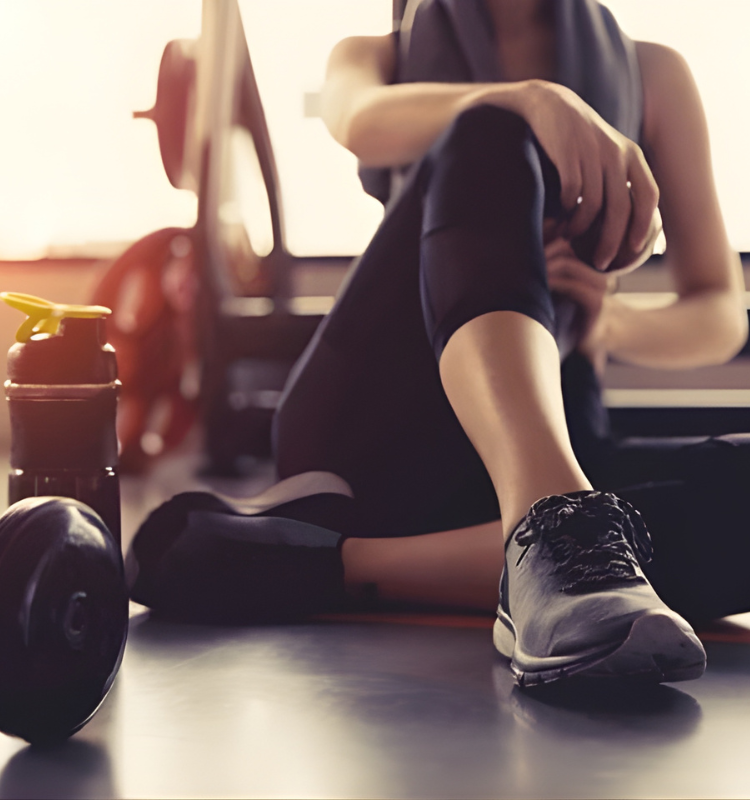Now Reading: The Home Gym Economics: The ₹10,000 Workout Setup That Works Better Than ₹1 Lakh Gym Equipment
-
01
The Home Gym Economics: The ₹10,000 Workout Setup That Works Better Than ₹1 Lakh Gym Equipment
The Home Gym Economics: The ₹10,000 Workout Setup That Works Better Than ₹1 Lakh Gym Equipment

A software engineer in Pune just spent ₹87,000 on a “complete home gym setup” only to discover three months later that he uses maybe ₹15,000 worth of equipment regularly while the expensive treadmill serves as an overpriced clothes hanger, and his experience reveals a frustrating reality affecting thousands of Indians jumping into home fitness – equipment salespeople and fitness influencers push elaborate setups that generate commissions rather than actual workout results, creating massive equipment waste and financial regret.
Here’s the brutal truth that gym equipment retailers don’t emphasize during sales pitches: building an effective home gym costs under ₹50,000 with strategic equipment selection focusing on versatile basics, yet most first-time buyers spend ₹70,000-₹1,50,000 on redundant machines, specialized equipment used once monthly, and fancy features that add cost without improving workout effectiveness.
The most shocking part? The Pune engineer’s actual regular workout routine uses just resistance bands (₹800), adjustable dumbbells (₹6,000), and yoga mat (₹1,200) – totaling ₹8,000 in equipment that delivers identical fitness results to his ₹87,000 setup, meaning he wasted ₹79,000 on equipment gathering dust in his spare bedroom.

The Real Cost of Home Gym Equipment in India 2025
Understanding actual equipment costs versus marketed “package deals” helps separate genuine fitness investments from expensive mistakes that end up on resale platforms within months.
Essential Equipment Tier (₹8,000-15,000)
Resistance bands set: ₹800-1,500
- Provides: Full body resistance training, portable, space-efficient
- Replaces: Cable machines (₹30,000-50,000), some free weight exercises
Adjustable dumbbells (5-25 kg): ₹6,000-12,000
- Provides: Progressive resistance for most exercises
- Replaces: Fixed dumbbell sets (₹25,000-40,000 for equivalent weight range)
Yoga/Exercise mat: ₹1,200-2,500
- Provides: Floor exercise comfort, stretching surface
- Essential for: Bodyweight training, yoga, core work
Pull-up bar (door-mounted): ₹1,500-3,000
- Provides: Upper body pulling exercises
- Replaces: Lat pulldown machines (₹25,000-40,000)
Skipping rope: ₹200-800
- Provides: Cardio conditioning, coordination training
- Replaces: Treadmills/cycles for basic cardio (₹15,000-80,000)
Total Essential Tier: ₹10,000-20,000 This setup enables complete full-body workouts covering strength, cardio, and flexibility training sufficient for 90% of fitness goals.
Intermediate Equipment Tier (₹30,000-50,000)
Bench (adjustable): ₹8,000-15,000
- Adds: Chest exercises, incline/decline variations, seated support
Barbell with weights (30-50 kg): ₹12,000-20,000
- Adds: Heavy compound lifts, progressive overload capacity
Power rack/squat stand: ₹15,000-30,000
- Adds: Safety for heavy lifting, pull-up bar, multiple exercise variations
Total Intermediate Setup: ₹35,000-65,000 This level suits serious strength training goals requiring progressive overload beyond dumbbell capacity.
Premium Equipment Tier (₹80,000-2,00,000)
Treadmill: ₹25,000-80,000
- Adds: Convenient indoor running (but outdoor running is free)
Spin bike/cycle: ₹15,000-60,000
- Adds: Low-impact cardio (but actual cycling or walking outdoors is free)
Smith machine: ₹40,000-80,000
- Adds: Guided barbell movements (but free weights arguably more effective)
Cable machine: ₹35,000-70,000
- Adds: Constant tension exercises (but resistance bands provide similar benefits at 1/50th cost)
Total Premium Setup: ₹1,15,000-2,90,000 This tier makes sense only for dedicated fitness enthusiasts with specific training requirements and space/budget to accommodate specialized equipment.
The cost progression reveals the problem: Essential equipment providing 90% of fitness benefits costs ₹10,000-20,000, while premium setups costing 10-15x more provide maybe 10% additional training variation without necessarily improving results.

The Equipment Waste Patterns That Drain Budgets
Most home gym regret stories follow predictable patterns where initial enthusiasm drives expensive purchases that prove unnecessary once workout reality sets in.
Pattern #1: The Treadmill Clothes Hanger
Treadmills rank #1 in underutilized home gym equipment despite being the most expensive single purchase for many buyers. Home gym setup costs can reach ₹1-2 lakhs when including heavy equipment like treadmills, yet most see regular use for maybe 2-3 months before becoming expensive furniture.
Reality check: Outdoor running/walking provides identical cardiovascular benefits at zero cost, with added benefits of fresh air, changing scenery, and Vitamin D from sunlight. Unless living in extreme climates or locations where outdoor exercise is genuinely unsafe, treadmills represent poor value propositions.
The psychology trap: Treadmills feel like “serious fitness investment” that will motivate consistent use, but motivation comes from internal drive, not equipment ownership. The ₹40,000-80,000 treadmill doesn’t make running more appealing to people who dislike running.
Pattern #2: Specialized Equipment for Exercises Nobody Does
Ab wheels, specialized bars, preacher curl benches, leg extension machines, and various single-purpose equipment marketed as “complete your setup” end up unused because compound exercises with basic equipment provide superior overall results.
The versatility principle: Equipment used for multiple exercise variations gets regular use; specialized equipment for single exercises collects dust. Adjustable dumbbells enable 50+ exercises; a preacher curl bench does one thing poorly compared to regular dumbbell curls.
Pattern #3: Premium Features That Add Cost Without Value
Treadmills with built-in TV screens, app connectivity, and virtual training features; dumbbells with digital displays; benches with unnecessary adjustability beyond basic flat/incline positions. These features increase equipment costs by 40-60% while adding zero fitness effectiveness.
Marketing vs reality: Premium features sell equipment by creating perceived value differentiation, but workout results come from consistent effort with basic functionality, not technological bells and whistles that stop working after warranty expires.
Pattern #4: Buying for Future Aspirational Self
Purchasing 50 kg+ barbell sets and heavy equipment “for when I get stronger” despite currently struggling with bodyweight exercises. The future self who needs heavy equipment never arrives because inconsistency with basic training prevents progression requiring advanced equipment.
The progression reality: Start with minimal equipment matching current fitness level, adding specialized items only after consistently using basics for 6-12 months and genuinely outgrowing their training stimulus capacity.
Pattern #5: Replicating Commercial Gym at Home
Trying to recreate entire commercial gym equipment lineups at home despite having 1/20th the space and 1/10th the budget. The result is cramped spaces filled with redundant equipment that could be replaced by 3-4 versatile pieces providing equivalent training variety.
Space economics: Quality strength training equipment like hex dumbbells range from ₹1,100 for individual weights to ₹229,215 for complete sets. Most homes can’t accommodate or justify such complete setups when adjustable dumbbells provide equivalent function at fraction of cost and space.
The Budget Fitness Reality That Actually Works
Contrary to equipment marketing, extremely effective home workout programs exist using minimal equipment or even pure bodyweight training that costs literally zero rupees.
Bodyweight Training (₹0 – No Equipment Needed)
Push variations: Regular push-ups, wide grip, diamond, decline, plyometric Pull variations: Pull-ups (using parks/playgrounds), inverted rows (using tables) Squat variations: Bodyweight, pistol, Bulgarian split, jump squats Core: Planks, hollow holds, leg raises, bicycle crunches Cardio: Running, jumping jacks, burpees, mountain climbers
Progressive overload: Increasing reps, adding pauses, slowing tempo, advancing to harder variations
Reality: Gymnasts develop impressive physiques using primarily bodyweight training. The idea that equipment is necessary for fitness represents marketing success rather than training science reality.
Resistance Band Training (₹800-1,500 total investment)
Full body coverage: Bands enable push, pull, squat, and isolation movements across all muscle groups Progressive resistance: Different band tensions provide progressive overload as strength increases Space efficiency: Entire setup fits in desk drawer, enables workout anywhere Travel compatibility: Maintain training consistency during trips impossible with fixed equipment
The band advantage: Basic home gym equipment can be assembled for ₹6,300 including push-up bars (₹1,500), pull-up bars (₹2,500), skipping rope (₹100), dumbbell rods (₹300), and plates, but resistance bands alone provide similar training variety at even lower cost.
Minimal Equipment Programs (₹10,000-15,000)
Adjustable dumbbells (5-25 kg): ₹6,000-12,000 Pull-up bar: ₹1,500-3,000 Exercise mat: ₹1,200-2,500 Resistance bands: ₹800-1,500
This setup enables every major movement pattern: horizontal/vertical push and pull, squat variations, hinge movements, core training, and conditioning work. Professional trainers could design year-long progressive programs using only these items.
The diminishing returns reality: Going from ₹0 (bodyweight) to ₹10,000 (minimal equipment) might improve training variety 50%. Going from ₹10,000 to ₹50,000 might add 20% more variety. Going from ₹50,000 to ₹1,50,000 adds maybe 5% additional options while costing 3x more.
The Space Requirements Nobody Considers
Home gym equipment requires not just financial investment but significant space allocation that many Indian homes can’t accommodate without sacrificing living area functionality.
Space Reality Check
Treadmill footprint: 6-7 feet length × 3 feet width (18-21 sq ft) Power rack: 4-5 feet × 4 feet (16-20 sq ft) Bench + barbell workspace: 6-8 feet × 4-5 feet (24-40 sq ft) Full equipment spread: 100-150 sq ft dedicated space
Mumbai/Bangalore apartment context: Many 2BHK apartments are 800-1000 sq ft total. Dedicating 100-150 sq ft (10-15% of living space) to gym equipment represents major lifestyle compromise affecting daily functionality.
The opportunity cost: Space used for bulky gym equipment can’t serve other purposes. A spare bedroom converted to home gym loses its flexibility for guests, work-from-home office, storage, or other needs.
Space-Efficient Alternative Approaches
Resistance bands + doorway pull-up bar: 2 sq ft storage Adjustable dumbbells: 3-4 sq ft Fold-away bench: 4-6 sq ft when stored
Total: 10 sq ft maximum for equipment providing 80-90% of training variety versus 100-150 sq ft for “complete” setups.
The practical reality: Most effective home workout programs emphasize space-efficient equipment precisely because limited space is the binding constraint for Indian urban housing, not budget or equipment availability.
The Maintenance and Depreciation Reality
Home gym equipment requires ongoing maintenance and loses value rapidly, creating hidden costs beyond initial purchase prices.
Maintenance Requirements
Treadmills: Belt lubrication every 3-6 months, motor servicing annually Bikes/cycles: Chain maintenance, brake adjustments Weight equipment: Minimal maintenance but floor protection needed Resistance bands: Replace every 1-2 years with regular use
Annual maintenance costs: ₹2,000-8,000 depending on equipment complexity, with motorized equipment requiring most upkeep.
Resale Value Reality
Used treadmills: Sell for 30-50% of purchase price within 1-2 years Used weights: Retain 60-80% value if good condition Used resistance bands: Near-zero resale value (consumable item)
The depreciation trap: ₹60,000 treadmill worth ₹25,000-30,000 after 18 months represents ₹30,000-35,000 loss plus opportunity cost of capital tied up in depreciating asset.
Budget equipment advantage: Lower initial investment means lower absolute depreciation losses, making mistakes less expensive when equipment proves unsuitable for actual workout preferences.
The Workout Consistency Reality vs Equipment Quantity
Extensive research and real-world experience demonstrate that workout consistency matters infinitely more than equipment variety for achieving fitness goals, yet equipment marketing emphasizes variety over consistency.
The Consistency Paradox
Simple setups promote consistency: Fewer equipment choices reduce decision paralysis, shorter setup time lowers friction for starting workouts Complex setups hinder consistency: More options create “what should I do today?” paralysis, longer setup requirements provide excuses for skipping sessions
Real-world outcome: Person with ₹10,000 basic setup who workouts 4x weekly for 12 months achieves dramatically better results than person with ₹1,00,000 elaborate setup who manages 1-2 sessions weekly due to complexity and time requirements.
The motivation reality: Equipment doesn’t create motivation; it’s purchased during temporary motivation peaks that inevitably fade. Sustainable fitness comes from habit formation around minimal equipment that removes barriers to consistent execution.
The Program Design Truth
Effective training programs emphasize: Progressive overload, movement patterns, training frequency, recovery Equipment variety is secondary: Same results achievable with dumbbells, barbells, machines, or bodyweight training if program design principles are followed
The professional secret: Elite trainers can design effective programs using literally any available equipment because they understand training principles, not just equipment operation. Equipment is tools for implementing principles, not magic devices that automatically deliver results.
The Commercial Gym vs Home Gym Economics
Before investing heavily in home equipment, comparing long-term costs of quality commercial gym membership versus home setup reveals surprising economics.
10-Year Cost Comparison
Budget commercial gym membership:
- Monthly: ₹1,000-1,500 (₹12,000-18,000 annually)
- 10-year total: ₹1,20,000-1,80,000
- Equipment access: Complete range constantly maintained
- Space cost: Zero (gym provides facility)
Home gym setup:
- Initial investment: ₹50,000-1,00,000
- Maintenance: ₹2,000-5,000 annually
- 10-year total: ₹70,000-1,50,000
- Equipment access: Limited to purchased items
- Space cost: Opportunity cost of 100+ sq ft
- Depreciation: 50-70% value loss
The economic comparison depends on: Workout frequency (daily users benefit more from home gym), convenience value (time saved vs gym commute), space availability, and whether social aspects of commercial gyms provide motivation value.
Hybrid approach: Many find ₹10,000-20,000 home equipment for quick daily workouts plus budget gym membership for heavy lifting/specialized equipment provides optimal cost-benefit balance.
The Fitness Goals vs Equipment Requirements Reality
Different fitness goals require dramatically different equipment investments, with most people overspending for goals that need minimal equipment.
General Health and Fitness (Weight loss, basic strength, cardiovascular health) Required equipment: Minimal (₹5,000-15,000)
- Bodyweight training sufficient
- Light dumbbells for variety
- Cardio through outdoor activities
Equipment trap: This goal category represents 70-80% of home gym buyers yet they’re sold ₹50,000-1,00,000 setups designed for serious strength training they don’t need or want.
Serious Strength Training (Building significant muscle, powerlifting) Required equipment: Intermediate to advanced (₹40,000-80,000)
- Barbell with substantial weight capacity
- Power rack for safety
- Adjustable bench
Appropriate investment: This goal justifies equipment expense because progressive overload requires heavy weights that bodyweight/light dumbbells can’t provide.
Sport-Specific Training (Cricket, football, running) Required equipment: Sport-specific (₹5,000-20,000)
- Agility equipment
- Resistance bands for explosive training
- Sport-specific tools
Equipment trap: General gym equipment provides limited sport-specific benefits; better investment is quality coaching and sport-specific training rather than general strength equipment.
Rehabilitation and Injury Prevention Required equipment: Minimal specialized (₹8,000-25,000)
- Resistance bands (various tensions)
- Foam roller
- Stability ball
- Light dumbbells
Professional guidance matters more: Equipment alone doesn’t rehabilitate injuries; proper programming from physiotherapist is critical investment.
The Pune engineer’s ₹87,000 home gym represents the normalized but entirely preventable fitness equipment waste that’s become common as home workout popularity has grown post-pandemic. The convenience of online shopping combined with aggressive equipment marketing and influencer commissions has created a boom in expensive home gym purchases that end up underutilized within months.
The path from equipment waste to effective training involves honest assessment of actual workout preferences, starting with minimal equipment matching current fitness level, adding specialized items only after consistently using basics for 6+ months, and accepting that consistency with simple equipment beats sporadic training with elaborate setups.

Your neighbor who posts Instagram photos of their elaborate home gym is likely using fraction of that equipment regularly while feeling guilty about the ₹1,00,000+ investment gathering dust. Meanwhile, disciplined individuals achieving impressive results with ₹10,000-15,000 basic setups rarely post about their equipment because the focus is training results, not equipment collection.
The fitness equipment industry thrives on selling aspiration rather than practical solutions, convincing buyers that elaborate setups will motivate consistent training when research shows the opposite – simpler setups with lower friction promote better consistency than complex equipment requiring more time and decision-making.
Frequently Asked Questions:
How much does a basic home gym setup cost in India? An effective basic home gym setup costs ₹10,000-20,000 including adjustable dumbbells (₹6,000-12,000), resistance bands (₹800-1,500), yoga mat (₹1,200-2,500), door-mounted pull-up bar (₹1,500-3,000), and skipping rope (₹200-800). This minimal equipment enables complete full-body workouts covering strength, cardio, and flexibility training sufficient for 90% of fitness goals. More elaborate setups with benches and barbells cost ₹30,000-50,000, while premium equipment including treadmills can reach ₹80,000-2,00,000.
Is buying a treadmill for home worth it in India? Treadmills are generally poor value for home gyms in India, costing ₹25,000-80,000 while outdoor running/walking provides identical cardiovascular benefits at zero cost. Treadmills rank #1 in underutilized equipment, often becoming expensive furniture within 2-3 months. Unless you live in extreme climates or locations where outdoor exercise is genuinely unsafe, the ₹40,000-80,000 investment doesn’t justify the convenience for most buyers. Better alternatives include budget gym membership for equipment variety or investing in versatile strength equipment.
What home gym equipment do I actually need for fitness? For general health and fitness (weight loss, basic strength, cardio), you only need ₹5,000-15,000 in equipment: resistance bands, light dumbbells, and yoga mat, with cardio through outdoor activities. For serious strength training requiring progressive overload, invest ₹40,000-80,000 in barbell with weights, power rack, and adjustable bench. For sport-specific training, ₹5,000-20,000 in sport-specific tools plus quality coaching provides better value than general gym equipment. Equipment needs depend on specific goals, not general assumptions.
Why do most home gym setups fail and go unused? Home gyms fail because: (1) Equipment purchases during temporary motivation peaks that fade, requiring sustainable habits not dependent on equipment novelty, (2) Elaborate setups create decision paralysis and higher friction versus simple routines with minimal equipment, (3) Space constraints in Indian apartments make bulky equipment impractical for daily use, (4) Expensive equipment creates guilt when unused but doesn’t motivate consistency, and (5) Most buyers purchase equipment for aspirational future selves rather than current fitness levels, never progressing to need advanced equipment.
Should I buy home gym equipment or get commercial gym membership? The choice depends on: workout frequency (daily users benefit more from home setup), commute time to gyms (15+ minutes each way favors home gym), space availability (requires 100+ sq ft for complete setup), budget (10-year cost comparison: home ₹70,000-1,50,000 including maintenance vs commercial gym ₹1,20,000-1,80,000), and social motivation (some people need gym environment for consistency). Hybrid approach works well: ₹10,000-20,000 basic home equipment for daily quick workouts plus budget gym membership (₹1,000-1,500/month) for heavy lifting and equipment variety.
Also read: Critical Mistake: Why Charging To 100% Every Night Is Destroying Your Phone Battery – ParsoTak.in


















